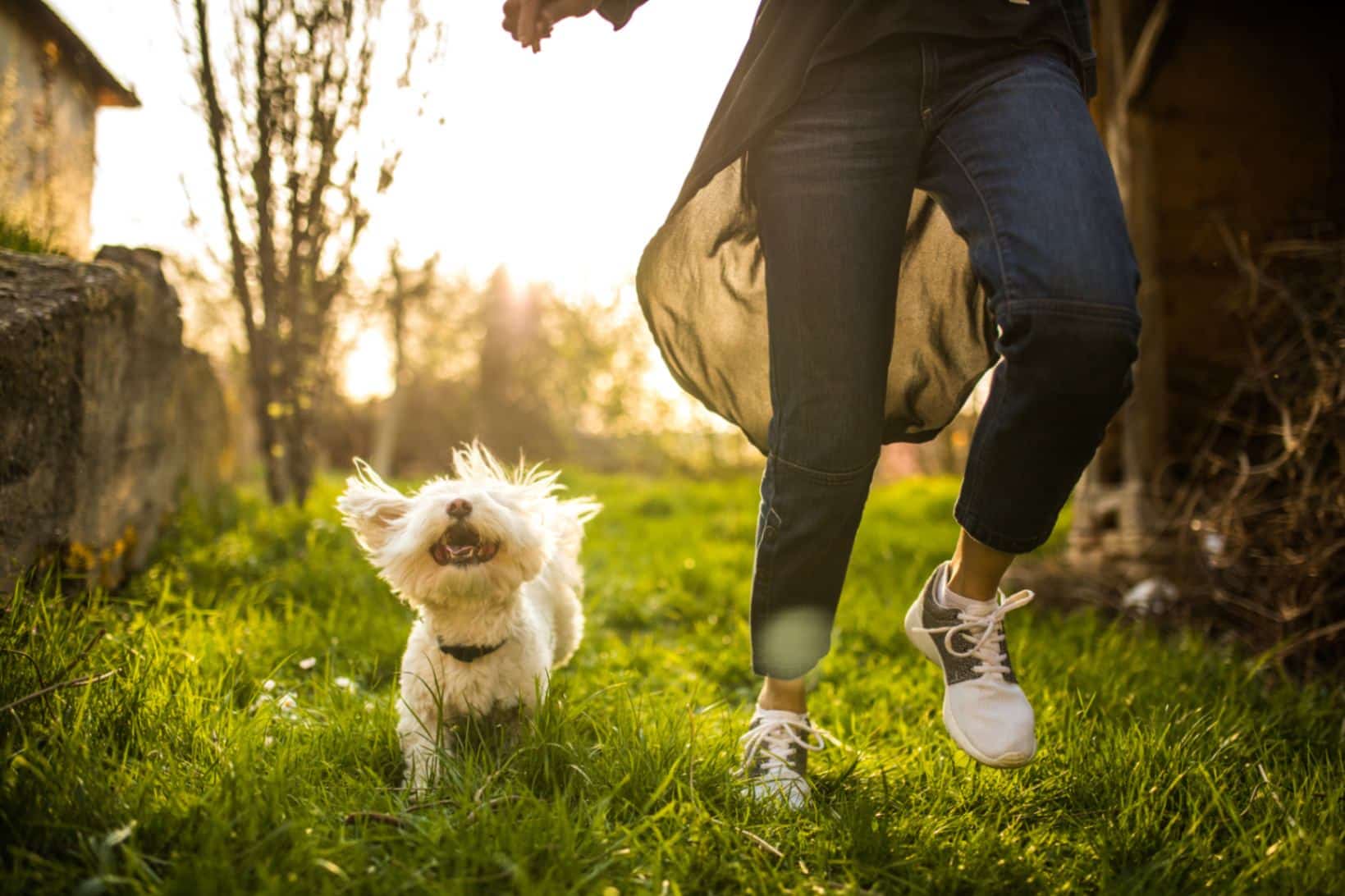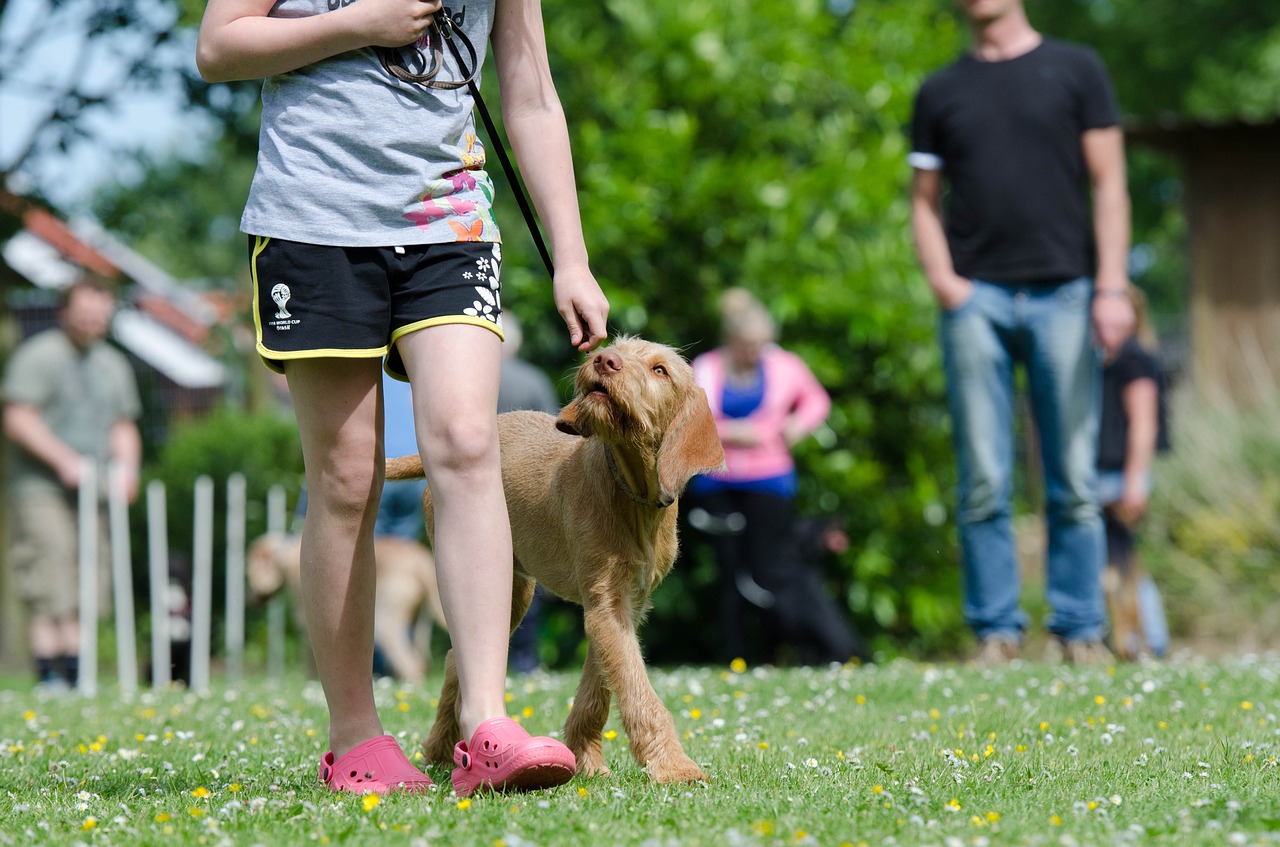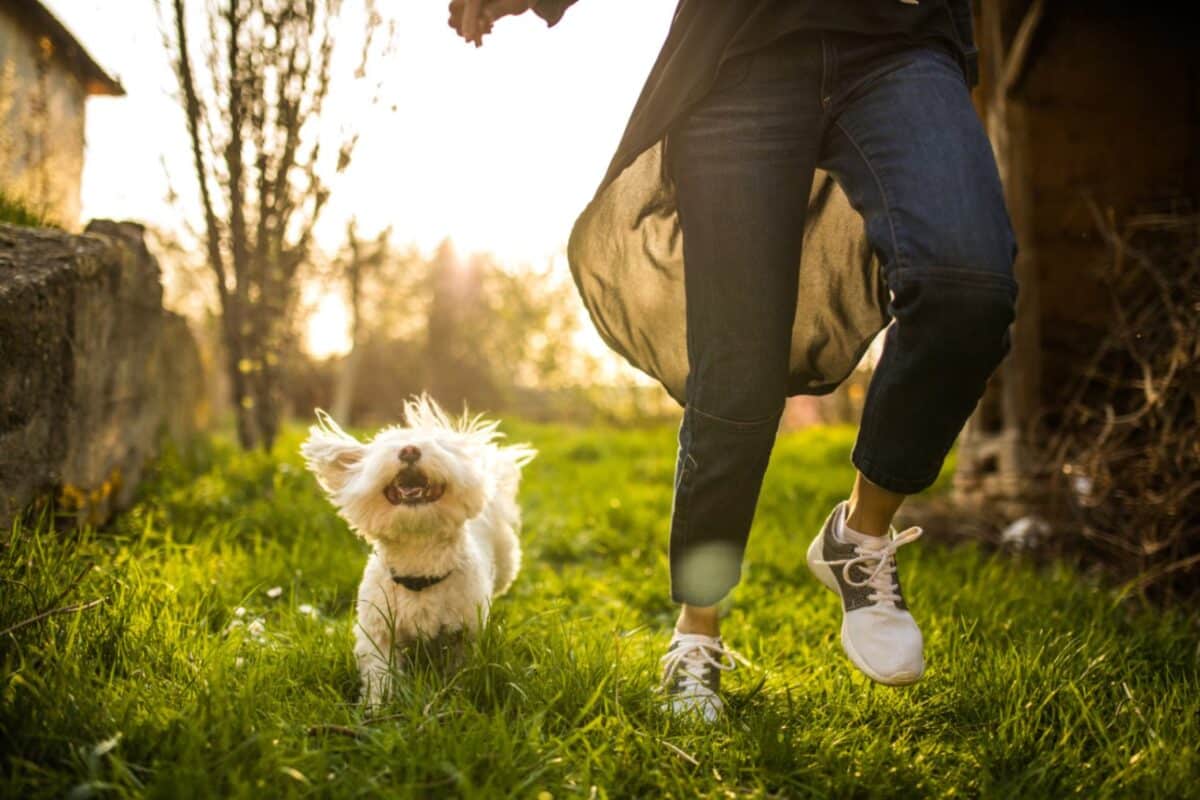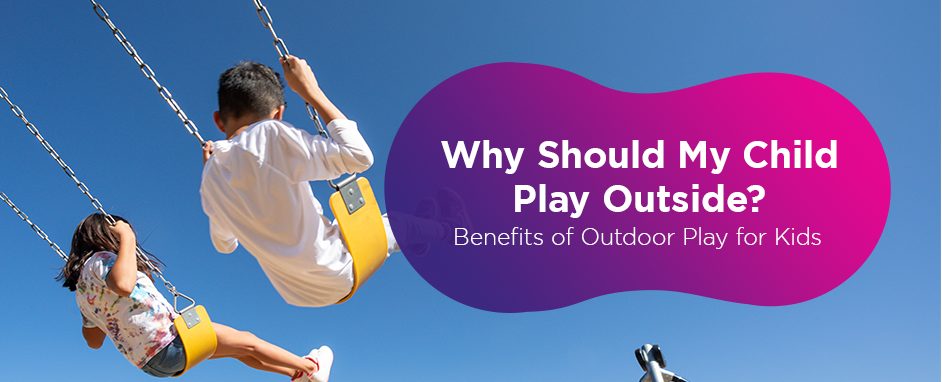Contents
I. Introduction

Welcome to our comprehensive guide on the importance of play in dogs and the behavioral and health benefits it provides. As dog owners, we all know how much our furry friends love to play, but did you know that playtime is more than just fun for them? It plays a crucial role in their overall well-being and development.
In this article, we will explore the various ways play impacts a dog’s behavior and health. From physical exercise to mental stimulation, playtime offers a range of benefits that contribute to a happy and balanced canine companion.
Whether you have a puppy or an adult dog, understanding the importance of play is essential for their overall happiness and quality of life. By engaging in regular play sessions, you can strengthen the bond with your dog, provide them with an outlet for their energy, and promote their physical and mental health.
Throughout this guide, we will delve into the different types of play, such as interactive play, social play, and mental stimulation games. We will also discuss the behavioral benefits of play, including stress reduction, improved social skills, and reduced destructive behavior.
Additionally, we will explore the health benefits of play, such as weight management, improved cardiovascular health, and enhanced cognitive function. We will provide practical tips and ideas for incorporating play into your dog’s daily routine, ensuring they receive the maximum benefits.
So, let’s dive in and discover how play can positively impact your dog’s behavior and health, and how you can make playtime an enriching and enjoyable experience for both you and your furry friend.
II. Behavioral Benefits of Play in Dogs

A. Mental stimulation and enrichment
Play is not just a fun activity for dogs; it also provides them with mental stimulation and enrichment. Dogs are intelligent creatures that thrive on mental challenges, and playtime offers them the opportunity to engage their minds and keep boredom at bay.
1. Types of play that provide mental stimulation
There are various types of play that can provide mental stimulation for dogs. One example is interactive puzzle toys, which require dogs to use their problem-solving skills to retrieve treats or toys hidden inside. These toys stimulate their cognitive abilities and keep them mentally sharp.
Another type of play that provides mental stimulation is hide-and-seek. This game not only engages a dog’s physical senses but also requires them to use their sense of smell and problem-solving skills to find hidden objects or people.
2. Impact of mental stimulation on dogs’ behavior
Providing dogs with regular mental stimulation through play has a positive impact on their behavior. When dogs are mentally stimulated, they are less likely to engage in destructive behaviors such as chewing on furniture or excessive barking. Mental stimulation also helps prevent behavioral issues related to boredom, such as separation anxiety.
B. Socialization and bonding
Play is not only beneficial for a dog’s mental well-being but also plays a crucial role in their socialization and bonding with humans and other dogs.
1. Play as a means of social interaction
Playtime provides dogs with opportunities for social interaction, both with humans and other dogs. Through play, dogs learn important social skills such as bite inhibition, body language, and appropriate play behavior. It also helps them develop a positive association with socializing, making them more confident and comfortable in various social situations.
2. Benefits of socialization for dogs’ behavior
Proper socialization is essential for a dog’s overall behavior and well-being. Dogs that are well-socialized tend to be more confident, less fearful, and exhibit better impulse control. They are also less likely to develop aggression or fear-based behavioral issues. Regular play sessions that involve social interaction contribute to a dog’s socialization process and help shape their behavior in a positive way.
C. Stress relief and anxiety reduction
Playtime is not just about physical exercise; it also serves as a valuable tool for stress relief and anxiety reduction in dogs.
1. How play helps dogs cope with stress
Engaging in play releases endorphins in a dog’s brain, which are natural mood boosters. These endorphins help dogs relax and reduce stress levels. Play also provides a healthy outlet for pent-up energy and frustration, preventing them from manifesting as stress-related behaviors.
2. Impact of play on dogs’ anxiety levels
Regular play sessions have been shown to reduce anxiety levels in dogs. The physical activity involved in play helps burn off excess energy and promotes a sense of calmness. Additionally, the social interaction and bonding that occur during playtime contribute to a dog’s overall emotional well-being, reducing anxiety and promoting a more balanced temperament.
In conclusion, playtime offers numerous behavioral benefits for dogs. It provides mental stimulation and enrichment, promotes socialization and bonding, and helps relieve stress and reduce anxiety. Incorporating regular play sessions into a dog’s routine is essential for their overall well-being and contributes to a happy and well-adjusted canine companion. So, make sure to set aside dedicated playtime for your furry friend and enjoy the positive impact it has on their behavior and happiness.
III. Health Benefits of Play in Dogs

A. Physical exercise and weight management
Regular exercise is crucial for maintaining a dog’s overall health and well-being. Just like humans, dogs need physical activity to stay fit and prevent obesity. Engaging in playtime activities can help dogs burn calories, maintain a healthy weight, and prevent weight-related health issues.
Play sessions that involve running, jumping, and chasing are particularly effective in providing dogs with the necessary physical exercise. Activities like playing fetch, going for walks, or participating in agility training can help dogs stay active and burn excess energy.
B. Muscle development and coordination
Playtime activities not only provide physical exercise but also contribute to muscle development and coordination in dogs. Certain types of play can target specific muscle groups and promote strength and agility.
Games that involve tug-of-war, wrestling, or playing with interactive toys can help dogs build and tone their muscles. These activities require dogs to use their bodies and engage in physical movements that enhance their coordination and motor skills.
C. Dental health and oral hygiene
Play can also have a positive impact on a dog’s dental health and oral hygiene. Chewing on appropriate toys and engaging in play that involves gnawing and biting can help keep a dog’s teeth clean and healthy.
Chew toys, specifically designed for dogs, can help remove plaque and tartar buildup, reducing the risk of dental issues such as gum disease and tooth decay. The act of chewing also stimulates saliva production, which aids in maintaining oral hygiene by naturally washing away food particles and bacteria.
D. Mental health and cognitive function
Play is not only beneficial for a dog’s physical health but also plays a crucial role in their mental well-being. Engaging in playtime activities provides mental stimulation and helps prevent boredom and behavioral problems.
Play serves as a mental workout for dogs, challenging their cognitive abilities and problem-solving skills. Interactive toys, puzzle games, and hide-and-seek activities can keep dogs mentally engaged and stimulated. This mental stimulation can improve their overall cognitive function and contribute to their mental health.
Furthermore, playtime activities can also strengthen the bond between dogs and their owners. The interaction and positive reinforcement during play create a sense of trust and companionship, promoting a healthy and happy relationship.
IV. Types of Play for Dogs

Play is an essential part of a dog’s life, providing numerous benefits for their overall well-being. There are various types of play that dogs engage in, including interactive play with owners, social play with other dogs, and solo play with independent toys. Each type of play offers unique opportunities for dogs to exercise, learn, and have fun. In this section, we will explore the different types of play and their benefits for dogs.
A. Interactive play with owners
1. Fetch and retrieve games
One of the most popular forms of interactive play between dogs and their owners is playing fetch. This game involves throwing a ball or toy for the dog to retrieve and bring back. Fetch not only provides physical exercise for the dog but also helps improve their coordination, agility, and focus. It is a great way to bond with your furry friend and strengthen the human-animal bond.
2. Tug-of-war and interactive toy play
Tug-of-war is another engaging game that dogs enjoy playing with their owners. It involves tugging on a rope or toy while the owner holds onto the other end. This game helps dogs release their pent-up energy, build strength in their jaws and neck muscles, and satisfy their natural instinct to pull and tug. Interactive toys, such as puzzle toys and treat dispensers, are also excellent options for interactive play. These toys stimulate the dog’s mind, challenge their problem-solving skills, and provide entertainment and mental stimulation.
B. Social play with other dogs
1. Off-leash play in dog parks
Dog parks are designated areas where dogs can socialize and play off-leash. These parks offer a safe and controlled environment for dogs to interact with other dogs and engage in various play behaviors. Social play with other dogs helps dogs develop their social skills, learn appropriate play behaviors, and establish social hierarchies. It also provides opportunities for exercise, mental stimulation, and enrichment.
2. Playdates and group play sessions
Organizing playdates with other dog owners or participating in group play sessions can be a great way to provide social play opportunities for your dog. These interactions allow dogs to learn how to communicate and interact with different breeds and personalities. Playdates and group play sessions also help dogs build confidence, reduce anxiety, and improve their overall social well-being.
C. Solo play and independent toys
1. Puzzle toys and treat dispensers
Puzzle toys and treat dispensers are excellent options for solo play. These toys are designed to challenge dogs mentally and physically. They usually require the dog to solve a puzzle or manipulate the toy to access treats or food hidden inside. Puzzle toys and treat dispensers keep dogs entertained, prevent boredom, and provide mental stimulation when they are alone or when their owners are busy.
2. Solo play options for dogs
There are various toys available in the market that are specifically designed for solo play. These toys can be interactive, such as self-moving balls or automated laser pointers, or they can be chew toys that dogs can enjoy on their own. Solo play options help dogs stay engaged, relieve stress, and prevent destructive behaviors that may arise from boredom or loneliness.
V. Safety Considerations for Dog Play

When it comes to dog play, safety should always be a top priority. Dogs, like humans, can sometimes get carried away in the excitement of play, and it’s important for owners to supervise and monitor their dogs to prevent accidents. In this section, we will discuss the importance of supervision and monitoring during play, as well as signs of aggression or discomfort to watch out for. We will also explore how to choose appropriate toys for play, considering factors such as toy materials, safety standards, and toy size suitability for different dog breeds.
A. Supervision and monitoring during play
1. Importance of supervision to prevent accidents
Supervision is crucial when dogs are engaged in play. It allows owners to intervene if necessary and prevent accidents from occurring. Even well-behaved dogs can sometimes get too rough or engage in behaviors that may lead to injuries. By closely watching their dogs, owners can ensure a safe and enjoyable playtime for everyone involved.
2. Signs of aggression or discomfort during play
While play is generally a positive and fun activity for dogs, it’s essential to be aware of any signs of aggression or discomfort. Dogs may display certain behaviors that indicate they are not comfortable or enjoying the play session. These behaviors can include growling, snapping, raised hackles, stiff body posture, or excessive avoidance. If any of these signs are observed, it’s important to separate the dogs and assess the situation to prevent any potential conflicts or injuries.
B. Choosing appropriate toys for play
1. Toy materials and safety standards
When selecting toys for dog play, it’s crucial to consider the materials used and ensure they meet safety standards. Opt for toys made from non-toxic materials that are durable and free from small parts that could be easily swallowed or choked on. Avoid toys with sharp edges or loose strings that could potentially harm your dog during play. Additionally, look for toys that are labeled as meeting safety standards set by organizations such as the American Society for the Prevention of Cruelty to Animals (ASPCA) or the Consumer Product Safety Commission (CPSC).
2. Toy size and suitability for different dog breeds
Another important factor to consider when choosing toys for dog play is the size and suitability for different dog breeds. Toys should be appropriately sized for your dog to prevent choking hazards or discomfort. For example, small toys may pose a risk for larger breeds, while larger toys may be too cumbersome for smaller breeds. Consider your dog’s size, jaw strength, and play style when selecting toys to ensure they are both safe and enjoyable for your furry friend.
VI. Best Dog Toy Brands on the Market
As a dog owner and enthusiast, I have had the pleasure of trying out various dog toy brands over the years. Through my personal experience and research, I have come across some exceptional brands that have consistently delivered high-quality and engaging toys for our furry friends. In this section, I will share my top picks for the best dog toy brands on the market.
1. Kong
Kong is a well-known and trusted brand in the dog toy industry. They are famous for their durable and interactive toys that are designed to keep dogs mentally stimulated and physically active. One of their most popular products is the Kong Classic, which is made of natural rubber and can be stuffed with treats or peanut butter to provide hours of entertainment for your dog. Kong toys are available in various sizes and are suitable for dogs of all ages and breeds.
2. Chuckit!
If you have an active dog who loves to fetch, Chuckit! is the brand for you. They specialize in fetch toys that are designed to be thrown long distances, making it easier for you to exercise your dog and keep them entertained. Their signature product, the Chuckit! Ball Launcher, allows you to throw the ball farther without straining your arm. Chuckit! also offers a wide range of balls, frisbees, and other fetch toys that are durable and easy to clean.
3. West Paw
West Paw is a brand that prioritizes sustainability and eco-friendly practices. They create their toys using non-toxic materials and strive to minimize their environmental impact. West Paw offers a variety of toys, including plush toys, treat-dispensing toys, and chew toys. Their Zogoflex line is particularly popular, as it is made of tough and durable material that can withstand even the most aggressive chewers. Additionally, West Paw offers a recycling program for their toys, ensuring that they are disposed of responsibly.
4. Outward Hound
Outward Hound is a brand that focuses on creating mentally stimulating toys for dogs. They offer a wide range of puzzle toys, interactive toys, and treat-dispensing toys that challenge your dog’s problem-solving skills and keep them engaged. One of their popular products is the Outward Hound Hide-A-Squirrel Puzzle Plush Squeaking Toy, which allows dogs to search and retrieve squeaky plush squirrels from a plush tree trunk. Outward Hound toys are designed to provide hours of entertainment and mental stimulation for your furry friend.
5. Nylabone
Nylabone is a brand that specializes in chew toys for dogs. They offer a wide range of durable and long-lasting toys that are designed to satisfy your dog’s natural urge to chew. Nylabone toys are available in various shapes, sizes, and flavors, ensuring that there is something for every dog. Their products are made of tough nylon material that can withstand even the most aggressive chewers. Nylabone also offers dental chew toys that help promote good oral hygiene by reducing tartar and plaque buildup.
When it comes to choosing the best dog toy brands, it’s important to consider your dog’s individual needs and preferences. Whether you have a heavy chewer, an active fetch enthusiast, or a puzzle-loving pup, there is a brand out there that caters to your dog’s specific interests. By investing in high-quality toys from reputable brands, you can provide your furry friend with endless hours of fun and enrichment.
